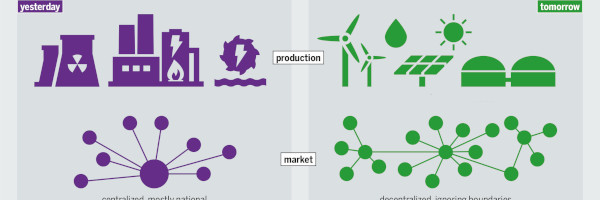Smart Grid
| {{{blueprint}}} | ||||||||||||||||||||||||||||||||||||||||||||||||||||||||
|---|---|---|---|---|---|---|---|---|---|---|---|---|---|---|---|---|---|---|---|---|---|---|---|---|---|---|---|---|---|---|---|---|---|---|---|---|---|---|---|---|---|---|---|---|---|---|---|---|---|---|---|---|---|---|---|---|

| ||||||||||||||||||||||||||||||||||||||||||||||||||||||||
| Sectors | Utility | |||||||||||||||||||||||||||||||||||||||||||||||||||||||
| Contact | Pete Tseronis | |||||||||||||||||||||||||||||||||||||||||||||||||||||||
| Topics | ||||||||||||||||||||||||||||||||||||||||||||||||||||||||
Activities
Press
| ||||||||||||||||||||||||||||||||||||||||||||||||||||||||
- Authors
A smart grid is an advanced version of the traditional electrical grid that uses digital technology to improve the efficiency, reliability, and flexibility of the system.
A smart grid allows for two-way communication between the power grid and the consumer, enabling the integration of renewable energy sources and electric vehicles, as well as the ability to monitor and manage energy usage in real-time. Smart grids also enable consumers to have greater control over their energy consumption and costs.
Benefits of a smart grid include:
- Improved efficiency: Smart grids can help reduce energy loss during transmission and distribution, as well as improve the overall efficiency of the power system.
- Increased reliability: Smart grids can provide real-time monitoring and control, which can help prevent power outages and improve the overall reliability of the grid.
- Greater integration of renewable energy: Smart grids can facilitate the integration of renewable energy sources, such as solar and wind power, into the grid.
- Reduced costs: Smart grids can help reduce costs by enabling more efficient use of energy and by reducing the need for expensive new power generation and transmission infrastructure.
- Increased consumer engagement: Smart grids can enable consumers to have greater control over their energy consumption and costs through smart meters and other devices.
Drawbacks of a smart grid include:
- High initial costs: Implementing a smart grid can be expensive, as it requires significant investments in new technology and infrastructure.
- Cybersecurity concerns: Smart grids rely on digital technology, which can make them vulnerable to cyber attacks.
- Privacy concerns: The use of smart meters and other devices to monitor energy consumption can raise concerns about privacy and data security.
- Complexity: Smart grids are complex systems that require sophisticated technology and management. This complexity can make them difficult to design, implement, and maintain.
Social issues: Some people may have difficulty adapting to the new technology and may feel that it is being imposed on them. Additionally, some people may be concerned about the potential for job losses in the traditional power sector.
Resilience
A smart grid can be designed to be "islandable," meaning it can operate independently from the main power grid. This allows the smart grid to continue functioning during power outages or other disruptions on the main grid. Islanding can be achieved through the use of distributed energy resources such as solar panels, wind turbines, and energy storage systems, which can supply power to the grid locally. This allows for a more resilient power system and increased energy security. However, it is important to note that not all smart grids have this feature and it depends on the specific design and implementation of the grid.
The benefits of making a smart grid islandable include:
- Increased energy security: An islandable smart grid can continue to supply power to the local area even if the main power grid is down, which can help to prevent power outages and increase energy security.
- Improved resiliency: An islandable smart grid can help to prevent power outages and improve the overall reliability of the grid.
- Increased integration of local renewable energy: An islandable smart grid can increase the use of local renewable energy sources, such as solar and wind power, which can help to reduce dependence on fossil fuels.
- Reduced costs: An islandable smart grid can help to reduce costs by reducing the need for expensive new power generation and transmission infrastructure.
- Increased autonomy: An islandable smart grid can enable communities to be more self-sufficient and less dependent on the main power grid.
- Better use of local resources: An islandable smart grid can use locally available resources such as solar, wind and hydro power, which can reduce the need for expensive transmission and distribution infrastructure.
- Reduced transmission losses: An islandable smart grid can reduce transmission losses by generating and consuming power locally, which can help to improve overall system efficiency.











